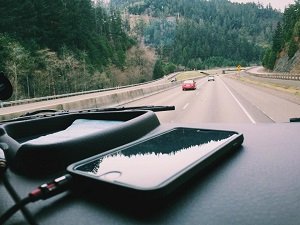Essay sample for high school represents an essay written in accordance with the basic requirements to the papers of high school students. The requirements for essay sample for high school include the presence of an introduction with a thesis statement, body paragraphs with supporting details and a conclusion summarizing the argument.

The popularity of mobile phones has led to a number of unintended and negative consequences. Thus, in addition to the benefits these devices offer to its users, they also can be dangerous in case of misuse. Texting while driving can become a distracting factor leading to a car accident and resulting in injuries and deaths. In fact, some drivers neglect their safety and the safety of surrounding people by reading or typing messages on the touchscreens of their gadgets. Therefore, the use of cell phones while driving is dangerous since it takes the attention away from driving increasing the chances of a car accident.
Texting while driving involves reading, composing, and sending text messages via a cell phone while driving a car. The problem of texting while driving lays in its negative effect on the driver’s ability to concentrate the attention on driving. Distracted drivers pose a threat to themselves and surrounding people since their inattention increases the risk of a car accident.Texting while driving distracts drivers visually, manually, and cognitively. Visual distraction occurs in the result of looking away from the roadway with the purpose to visually obtain information from the screen of the cell phone. Manual distraction occurs when the driver takes a hand off the steering wheel with the purpose to type a message or make another manipulation on the device. Finally, the driver becomes cognitively distracted in case he/she has to think about something he/she read on the screen of the phone. All types of the aforementioned distractions increase the risk of a car accident.
The danger of texting while driving is supported by numerous studies. In accordance with the research study conducted by the Daily Mail, texting while driving delays the driver’s reaction times by 37%. It should be admitted that drinking to legal limit delays the reaction times only by 13%. Therefore, texting while driving negatively affects the ability to focus on the roadway increasing the reaction times that may be critical for avoiding a car accident.
According to a survey conducted by the University of Southern California, despite the awareness of the potential risks from texting while driving, 18% of Americans note that they simply cannot resist the urge to use their gadgets while driving. Moreover, the same survey demonstrated that Millennials are more likely to use their phones while driving compared to other generations. The significance of the issue is supported by the statistics. In accordance with the National Safety Council Reports, every year more than 1.6 million car accidents occur in result of using cell phones while driving. Moreover, texting while driving leads to 330,000 injuries each year. Finally, every fourth death on the roads of the U.S. is caused by drivers who neglected the danger of texting while driving.
To conclude, texting while driving is a critical issue exposing both drivers who use their phones and surrounding people to a risk of a car accident. Young drivers reported less awareness of the potential risks associated with the usage of cell phones while driving. Texting while driving leads to the lack of attention on the road increasing the reaction times. As a result, distracted drivers pose a threat to themselves and surrounding people.
References
- Annual Estimate of Cell Phone Crashes 2013. (2015). National Safety Council
- Bowerman, M. (2015). Texting while driving kills, but will we stop?. USA TODAY. Retrieved 4 July 2016, from http://www.usatoday.com/story/tech/2015/03/12/texting-driving-dangerous-behavior/70147834/
- Safety in Numbers. (2013). U.S. Department of Transportation and National Highway Safety Administration
- Schick, A. (2014). Distraction by Cell Phones and Texting. U.S. Department of Transportation and National Highway Safety Administration
- Spencer, B. (2014). Texting while driving ‘slows reaction times more than drink or drugs’.Mail Online. Retrieved 4 July 2016, from http://www.dailymail.co.uk/news/article-2652015/Texting-driving-slows-reaction-times-drink-drugs.html
